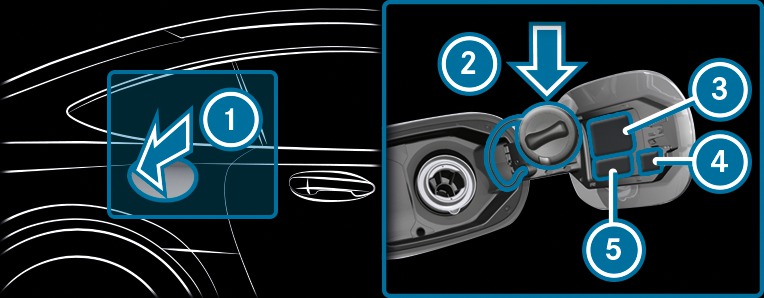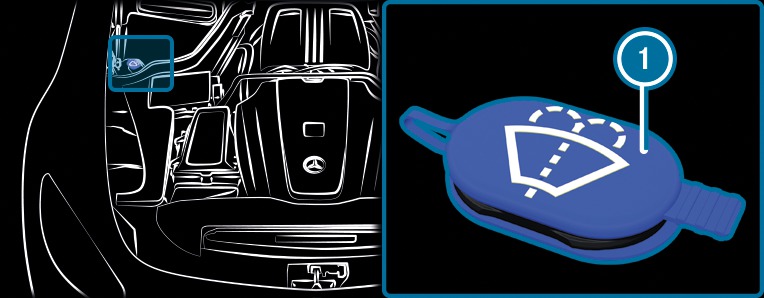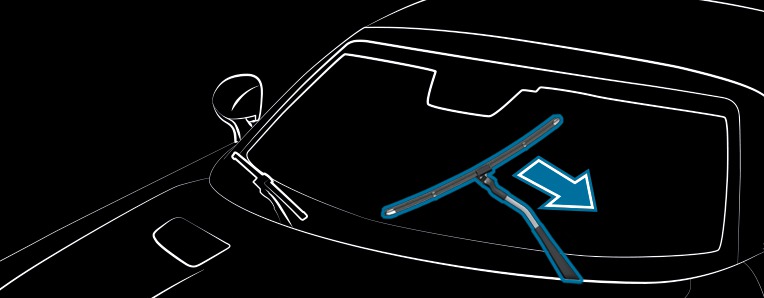The automatic filling station search is activated
 More.
More.
Route guidance is active. The fuel level in the fuel tank reaches the reserve fuel level.
The Fuel tank reserve level Do you want to start the search for filling stations? message is shown.
The automatic filling station search begins. The available filling stations along the route or in the vicinity of the vehicle's current position are displayed.
The address of the filling station is displayed.
The selected filling station is set as the destination. Route guidance begins.
Start new route guidance: the selected filling station is set as a new destination. The previous destinations and intermediate destinations are deleted. Route guidance to the filling station begins.
Set as next intermediate destination: the selected filling station is set as the next intermediate destination. Route guidance begins.
The selected filling station is entered into position 1 of the intermediate destinations menu. Intermediate destination 4 is deleted. Route guidance begins.
Fuels are highly flammable.
Fuels are poisonous and hazardous to your health.
If you or other people come into contact with fuel, observe the following:
Electrostatic charge can ignite fuel vapour.
Vehicles with a petrol engine:
Even small amounts of the wrong fuel could result in damage to the fuel system, the engine and the emission control system.
Fuel of this specification may contain up to 10% ethanol. Your vehicle is suitable for use with E10 fuel.
diesel
regular petrol with an octane number lower than 91 RON
petrol with more than 10% ethanol by volume, e.g. E15, E20, E85, E100
petrol with more than 3% methanol by volume, e.g. M15, M30
petrol with additives containing metal
If you have accidentally refuelled with the wrong fuel:
do not switch the ignition on. Otherwise fuel can enter the engine.
Even small amounts of the wrong fuel could result in damage to the fuel system and the engine. The repair costs are high.
The vehicle is unlocked.
Do not get into the vehicle again during the refuelling process. Otherwise, electrostatic charge could build up again.
Observe the notes on operating fluids and fuel.
The recommended octane number for your vehicle can be found on the information label in the fuel filler flap.






 .
.  .
.  .
. Close the fuel filler flap before locking the vehicle.
The spelling on the main menu displayed may differ. Therefore, observe the menu overview for the instrument display More.
Trip distance
Trip computer From start and From reset
If you press and hold the left-hand Touch Control, the values of the function will be reset immediately.
Certain components in the engine compartment can be very hot, e.g. the engine, the radiator and parts of the exhaust system.
If you open the engine bonnet when the engine has overheated or during a fire in the engine compartment, you could come into contact with hot gases or other escaping operating fluids.
Components in the engine compartment may continue running or start up suddenly, even if the ignition is switched off.
Make sure of the following before performing tasks in the engine compartment:
Windscreen washer concentrate is highly flammable. It could ignite if it comes into contact with hot engine component parts or the exhaust system.

 by the tab.
by the tab. If the windscreen wipers begin to move while you are changing the wiper blades, you can be trapped by the wiper arm.
 button on the combination switch for approximately three seconds More.
button on the combination switch for approximately three seconds More. The wiper arms will move into the change position.

If you open the engine bonnet when the engine has overheated or during a fire in the engine compartment, you could come into contact with hot gases or other escaping operating fluids.
Certain components in the engine compartment can be very hot, e.g. the engine, the radiator and parts of the exhaust system.
Components in the engine compartment may continue running or start up suddenly, even if the ignition is switched off.
Make sure of the following before performing tasks in the engine compartment:
the engine has been warmed up.
the coolant temperature is 80°C.
the vehicle is parked on a level surface.
the engine has run at idle speed for 30 seconds in the drive program
 .
.
Check the engine oil level within two minutes of switching off the engine.

 out and wipe off.
out and wipe off.  into the guide tube to the stop, and pull it out again after approximately three seconds.
into the guide tube to the stop, and pull it out again after approximately three seconds. oil level is correct: oil level is between
 and
and  .
. oil level too low: oil level is at
 or below.
or below. oil level too high: oil level is above
 .
.
Braking efficiency is reduced after washing the vehicle.
Active Brake Assist
Active Distance Assist DISTRONIC
HOLD function
To avoid damage to the vehicle, deactivate these systems in the following or similar situations:
Active Distance Assist DISTRONIC is deactivated.
The HOLD function is switched off.
the extendable rear wing is completely retracted.
the side windows are completely closed.
the blower for the ventilation/heating is switched off.
the windscreen wiper switch is in position
 .
. the key is at a minimum distance of 3 m away from the vehicle, otherwise the tailgate could open unintentionally.
in car washes with a conveyor system: neutral
 is engaged.
is engaged.
In car washes with a conveyor system: if you would like to leave the vehicle while it is being washed, make sure the key is located in the vehicle. The park position  is otherwise automatically engaged.
is otherwise automatically engaged.
If, after the car wash, you remove the wax from the windscreen and wiper rubbers, this will prevent smearing and reduce wiper noise.

